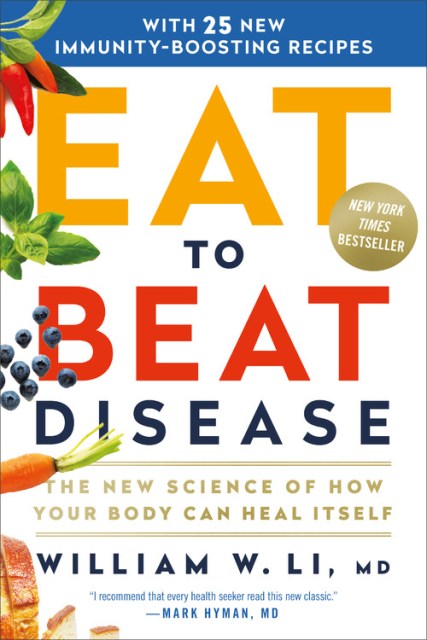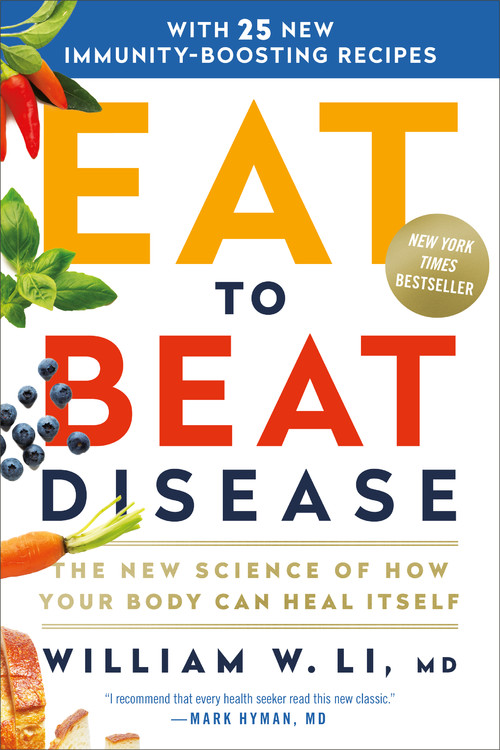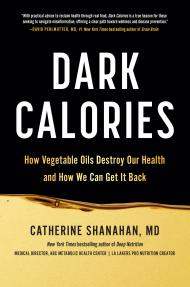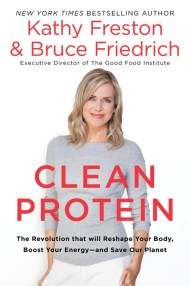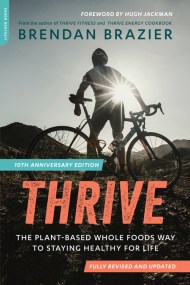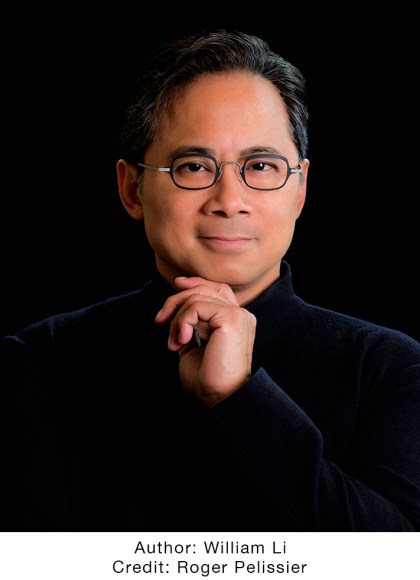Promotion
Use code BEST25 for 25% off storewide. Make sure to order by 11:59am, 12/12 for holiday delivery!
By clicking “Accept,” you agree to the use of cookies and similar technologies on your device as set forth in our Cookie Policy and our Privacy Policy. Please note that certain cookies are essential for this website to function properly and do not require user consent to be deployed.
Eat to Beat Disease
The New Science of How Your Body Can Heal Itself
Contributors
Formats and Prices
- On Sale
- Mar 22, 2050
- Page Count
- 512 pages
- Publisher
- Balance
- ISBN-13
- 9781538714614
Price
$21.99Price
$28.99 CADFormat
Format:
Buy from Other Retailers:
Forget everything you think you know about your body and food, and discover the new science of how the body heals itself. Learn how to identify the strategies and dosages for using food to transform your resilience and health in Eat to Beat Disease.
We have radically underestimated our body’s power to transform and restore our health. Pioneering physician scientist, Dr. William Li, empowers readers by showing them the evidence behind over 200 health-boosting foods that can starve cancer, reduce your risk of dementia, and beat dozens of avoidable diseases. Eat to Beat Disease isn’t about what foods to avoid, but rather is a life-changing guide to the hundreds of healing foods to add to your meals that support the body’s defense systems, including:
- Plums
- Cinnamon
- Jasmine tea
- Red wine and beer
- Black Beans
- San Marzano tomatoes
- Olive oil
- Pacific oysters
- Cheeses like Jarlsberg, Camembert and cheddar
- Sourdough bread
The book’s plan shows you how to integrate the foods you already love into any diet or health plan to activate your body’s health defense systems-Angiogenesis, Regeneration, Microbiome, DNA Protection, and Immunity-to fight cancer, diabetes, cardiovascular, neurodegenerative autoimmune diseases, and other debilitating conditions.
Both informative and practical, Eat to Beat Disease explains the science of healing and prevention, the strategies for using food to actively transform health, and points the science of wellbeing and disease prevention in an exhilarating new direction.
-
"A groundbreaking physician shares how we can use food to hack our natural defense systems and hardwire ourselves for health."Mehmet Oz, MD, Host of The Dr. Oz Show
-
"Dr. William Li is a healthcare pioneer . . . Dr. Li helps our readers thrive by unpacking how the body's own systems respond to what we eat. His book will give practical tips for healthier living and empower readers with ways they can help their bodies fight disease."Arianna Huffington, Founder and CEO, Thrive Global
-
"Finally! A book that tells us the truth about what we can eat to be healthy, based on real science, from a true expert. Eat to Beat Disease will completely change the way you think about your body and the choices you make when you grocery shop, cook for your family, or dine out. Read this book from cover to cover if you want to be on top of your game for health, beauty, and fitness, from the inside out. When it comes to food and health, I'm so happy to have Dr. Li in my camp!"Cindy Crawford
-
"An ode to one of life's greatest pleasures and a convincing case for a healthy appetite. This book will entertain, educate, devour and then empower you. Dr. William Li teaches us that we have radically underestimated our own power to transform and restore our health. This is a fascinating story of the power of food, a reflection on what we mean by health, and practical tool with the 5x5x5 framework to make sure we are around to enjoy life's pleasures for as long as possible."Bono
-
"'We are what we eat' goes the old cliché, but it would be more accurate to say that 'We are what we extract from our food.' What if food is more than energy and more than nutrition but a form of medicine? In his ground-breaking book Eat to Beat Disease, Dr. William Li brings the discipline of clinical medical research to bear on a new analysis of the relationship between food and health. Piecing together the puzzle of the how the food we consume impacts how the human body functions and how it protects itself from disease, Dr. Li puts forward a new paradigm to explain this relationship: 'Food as Medicine.' Eat to Beat Disease heralds a revolution in thinking about how the food we eat dictates our health."The Edge, U2, Director, The Angiogenesis Foundation
-
"Unlike so many books that turn people away from the foods they enjoy, Eat to Beat Disease shows us how the foods we love actually support our wellbeing and vitality. I recommend that every health seeker read this new classic, and tell their friends and family all about it."Mark Hyman, MD, Director, Cleveland Clinic Center
-
"In a new ground-breaking study -- Eat to Beat Disease -- Dr. William W. Li provides the knowledge and tools to make better decisions what to eat every day. This easy-to-read book is not a diet book but help you better understand what you eat."The Washington Book Review
-
"As the former Secretary of Agriculture, one of my tasks was to promote good health and nutrition by giving the public modern, scientifically based information, on the foods they eat. Dr. Li's transformational book is one of the best narratives I have read on the scientific relationship between healthy food, nutrition, and the fight against disease. I recommend it highly."Dan Glickman, Former US Secretary of Agriculture, Vice President, Aspen Institute, Former Chairman, Motion Picture Association of America
-
"Molecular Medicine has finally been joined by Molecular Nutrition! For decades, we captured a primitive understanding 'healthy foods' and applied maxims like 'an apple a day keeps the doctor away.' In this book, Dr. Li not only tells us why an apple has health benefits but even more importantly tells us which variety of apple is best!"Andrew C. Von Eschenbach, MD, President, Samaritan Health Initiatives, Former Director of the National Cancer Institute, Former Commissioner of the Food and Drug Administration
-
"The time has come for 'health' to be properly defined and for us to understand clearly how food impacts health. Eat to Beat Disease delivers on this vision in a big way -- and with real science to back it up. Dr. Li's highly enjoyable and informative book spreads the word that achieving great health is within reach for all of us, using the very foods that we love. Eat to Beat Disease will excite, amaze, and inspire us all to eat healthy and defeat disease. And remember -- you are in control of your own destiny."Louis J. Ignarro, 1998 Nobel Laureate in Medicine
-
"Among the many diet and health books of recent years, this book should top the list. Dr. William Li, an experienced internal medicine physician, also has an outstanding professional reputation in medical research. He knows science and how to present it to the public. His facts can only lead to a more fulfilling way to think about health for all of us."T. Colin Campbell, PhD, Cornell University, Author of The China Study and Whole
-
"Eat to Beat Disease is a trailblazing book. Author, world-renowned physician and medical scientist Dr. William Li explains how we have the power to help control our own health destiny by making decisions that help the body heal itself. Dr. Li describes how more than 200 foods amplify our body's defenses which can result in beneficial health outcomes. Eat to Beat Disease is a must read -- I strongly endorse it."Dean Ornish, MD
Newsletter Signup
By clicking ‘Sign Up,’ I acknowledge that I have read and agree to Hachette Book Group’s Privacy Policy and Terms of Use
